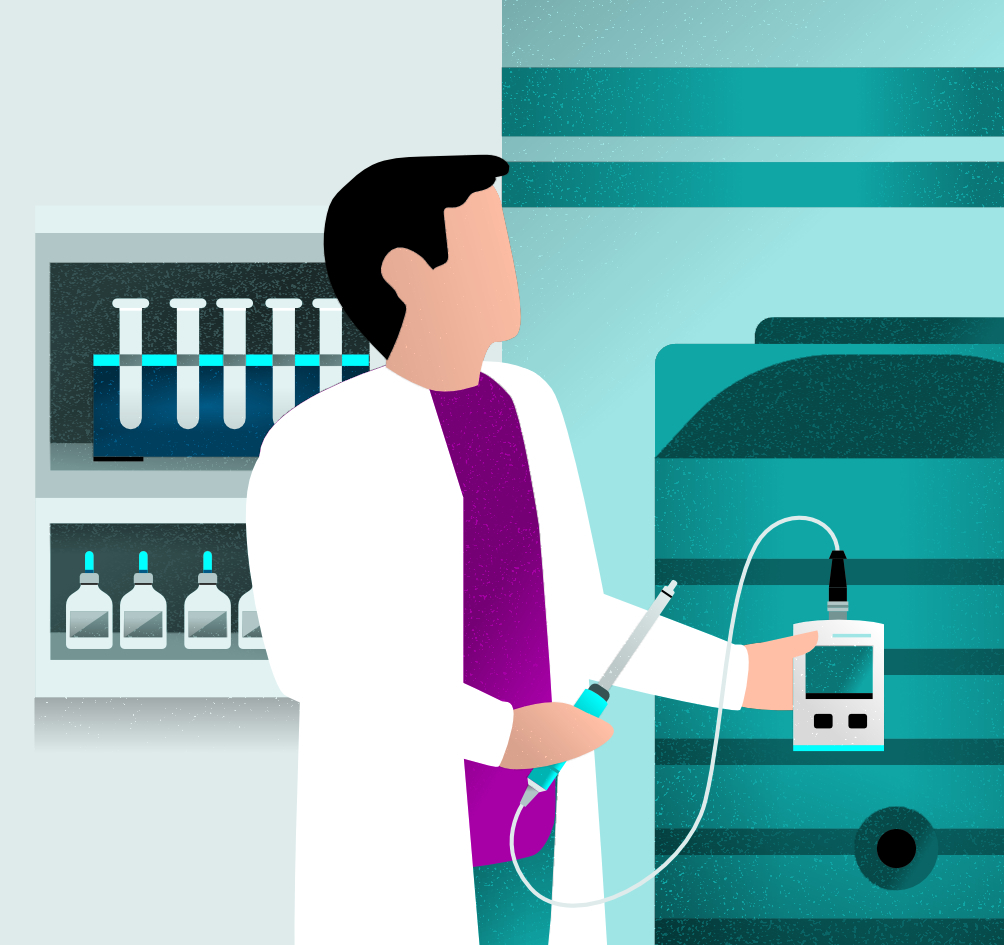A true digital native
The Industrial Internet of Things makes it possible: Micropilot FWR30 is the world’s first cloud-connected 80 gigahertz radar level sensor that measures and monitors both stationary and mobile intermediate bulk containers.

Intermediate bulk containers (IBCs) are used in every industry, where they are filled with coolants, liquid foods, chemicals, pharmaceuticals and much more. One of the major advantages is that they can be used in a flexible way, which also presents a disadvantage, however, as classic inventory monitoring solutions are often too complex for mobile tanks that are frequently spread over a wide area. Empty tanks that need replenishing often go unnoticed until it is too late: when the container is empty.
To prevent unpleasant surprises, Endress+Hauser now offers a new solution for remote level monitoring for mobile tanks. At the heart of the solution lies a precise, cloud-connected measurement device that was developed for exactly this type of application. The Micropilot FWR30 is the world’s first wireless 80 gigahertz radar level sensor that communicates exclusively via the IIoT. The battery-powered device requires neither data nor electrical cables and instead transmits its measured values to the Netilion Cloud using a battery-powered mobile connection. “The IIoT sensor delivers facts, whereas customers relied on assumptions for their applications up until now,” explains Janina Meng, Product Manager at Endress+Hauser.

Flexible labs, flexible processes
Different measurement technologies in laboratory and process can lead to deviations in liquid analysis. A new multiparameter handheld by Endress+Hauser is bridging the gap between these two fields: The Liquiline CML18 is an all-rounder for measured value monitoring. The pocketsized transmitter uses Memosens sensors and can reliably determine pH, ORP, conductivity and dissolved oxygen in addition to temperature. The device immediately recognizes which sensor has been connected and automatically loads any stored sensor data while displaying the correct measured value. This allows users to apply the same sensors used at set measurement points in processes for sample analysis in laboratories.
Easy to use
The cost-effective and compact device is installed and operational in just a few steps. The sensor can also be attached using the bracket provided so the IBCs can still be stacked. It is quickly and easily set up via an app. Users don’t have to do anything until the solution signals that the tank needs refilling. The inbuilt lithium battery does not require constant replacement and has a battery life of up to ten years depending on the preset measurement interval.
Customers can make a flexible choice from a broad range of digital products to meet the requirements of their application. The Netilion Value starter pack provides an overview of current measured values, historical data and device status. Based on this, Netilion Inventory additionally allows for simple and clear management of inventories, while SupplyCare Hosting offers an all-encompassing inventory management solution with a diverse range of functions. The digital services can be accessed via smartphone and tablet in addition to desktop PCs, while the data transmission fulfills the highest safety and data protection requirements.

A finger on the pulse of measurement
Endress+Hauser is rolling out its Heartbeat Technology to a growing number of measuring principles and devices. The latest newcomers include the Liquiphant FTL51 point level switch for liquids as well as the Prosonic Flow G for gas flow measurement. New Cerabar and Deltabar device families for pressure and differential pressure measurement will soon be launched and will also feature the technology. Devices with Heartbeat functions offer major advantages when it comes to applications relevant to safety: They continuously monitor themselves, can be verified at the touch of a button without removing the device and recognize influences that negatively affect their measuring performance. This makes processes safer, increases system availability and enables predictive maintenance.
Published 01.01.2020, last updated 23.11.2022.
Dive into the world of the process industry through new exciting stories every month with our «changes» newsletter!









